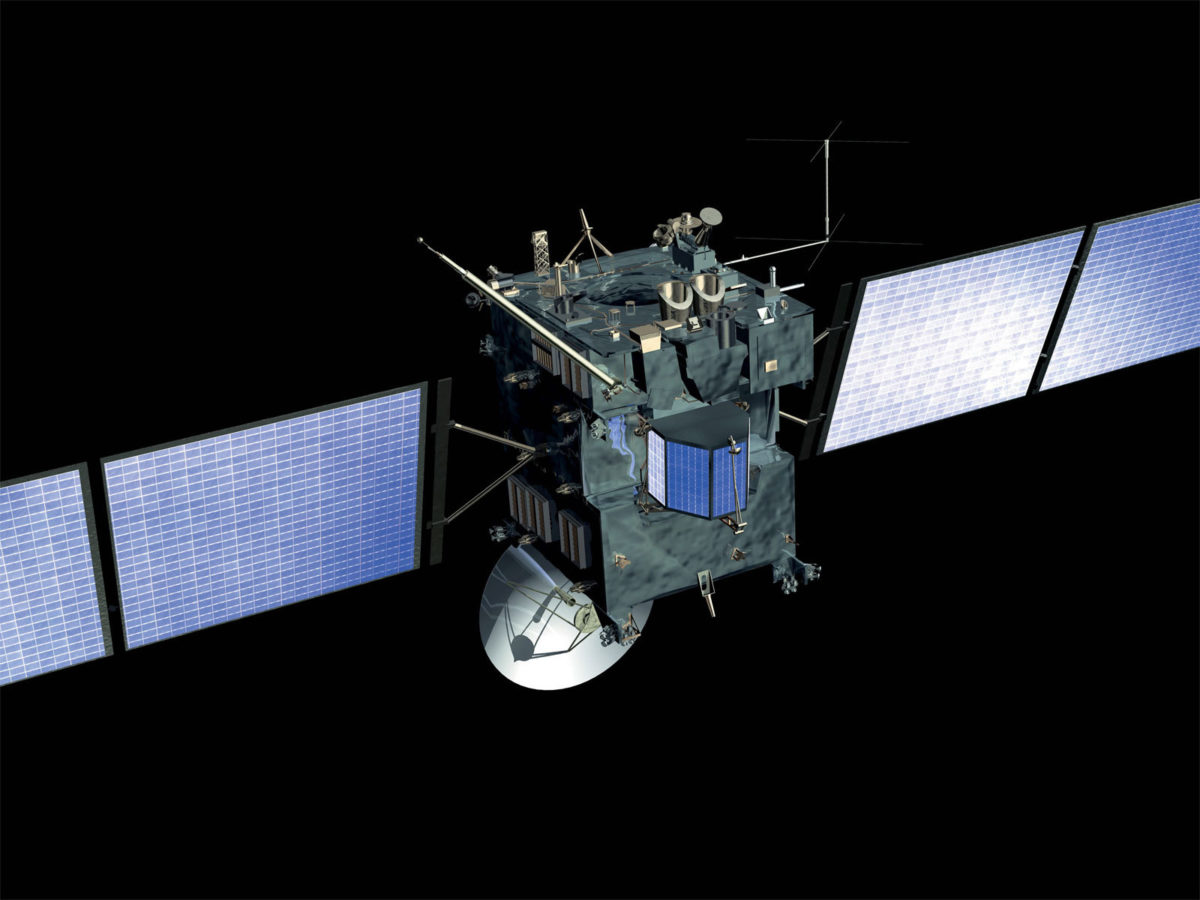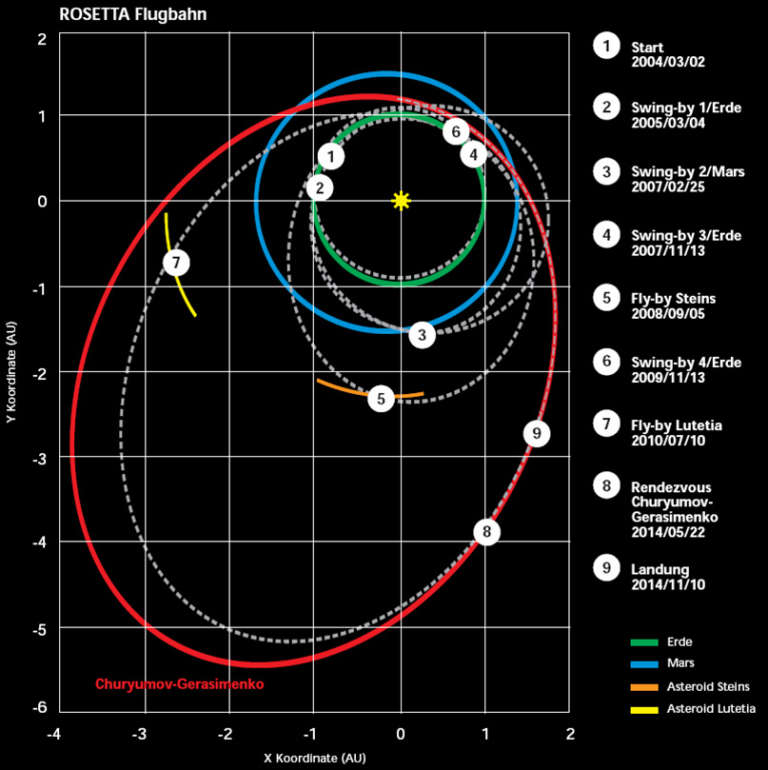Emily Lakdawalla • Jan 18, 2011
Rosetta burns for its comet
Rosetta -- Europe's comet-chasing spacecraft -- is in the middle of a three-day series of rocket firings that are setting the geometry for its rendezvous with comet 67/P Churyumov-Gerasimenko (which I have heard called "Cherry Gerry," for short). These aren't just any deep space maneuvers; between last night and January 23, Rosetta will have fired its rockets for more than seventeen hours.

Seventeen hours! That's a lot!!
When all's done, four major rocket burns will have imparted a total velocity change of 778 meters per second to Rosetta. That is also quite a lot; it's as much as is usually required to put a spacecraft in orbit around a planet. For comparison, when Cassini-Huygens fired its main engine to enter orbit at Saturn, it changed its velocity by only 626 meters per second; MESSENGER's high-speed orbit insertion will require more than 800 meters per second. Of course those orbit burns are all done at once; Rosetta's big velocity change is happening over a space of a week or so. And Rosetta isn't entering orbit yet. Far from it; more than three years remain until it finally gets to the comet in May 2014.
Rosetta's biggest burn was completed successfully last night, according to the Rosetta blog. Another should have happened today, and two more are planned for the coming days:
| Date/Time Start (UTC) | End | Magnitude | Duration |
|---|---|---|---|
| Jan 17 19:03 | Jan 18 [time not specified] | 300 m/s | |
| Jan 18 18:59:31 | Jan 19 01:13:00 | 274 m/s | 371 min |
| Jan 21 18:49:07 | 21:40:00 | 120 m/s | 171 min |
| Jan 23 18:42:05 | 20:39:05 | 78.2 m/s | 118 min |
There may be one or two small burns after these big ones for final fine-tuning. In July of this year, Rosetta will be put into a hibernation mode, sleeping until shortly before its arrival at the comet three years from now. That's necessary because the solar-powered Rosetta is traveling so very far from the Sun, as you can see in this diagram (the gridlines are measured in AU):

Support our core enterprises
Your support powers our mission to explore worlds, find life, and defend Earth. You make all the difference when you make a gift. Give today!
Donate

 Explore Worlds
Explore Worlds Find Life
Find Life Defend Earth
Defend Earth

